Whether you’re recovering from surgery, dealing with dental issues, managing digestive problems, or simply looking for gentle meals, soft foods can be a lifesaver. These foods are easy to chew and swallow while still providing essential nutrients your body needs to heal and function.
But “soft foods” doesn’t mean boring or bland. In fact, there’s a surprising variety of delicious, nutritious soft foods you can enjoy no matter your reason for needing them.
Let’s dive into what soft foods are, who they’re for, how to prepare them, and answers to the most frequently asked questions.
What Are Soft Foods?
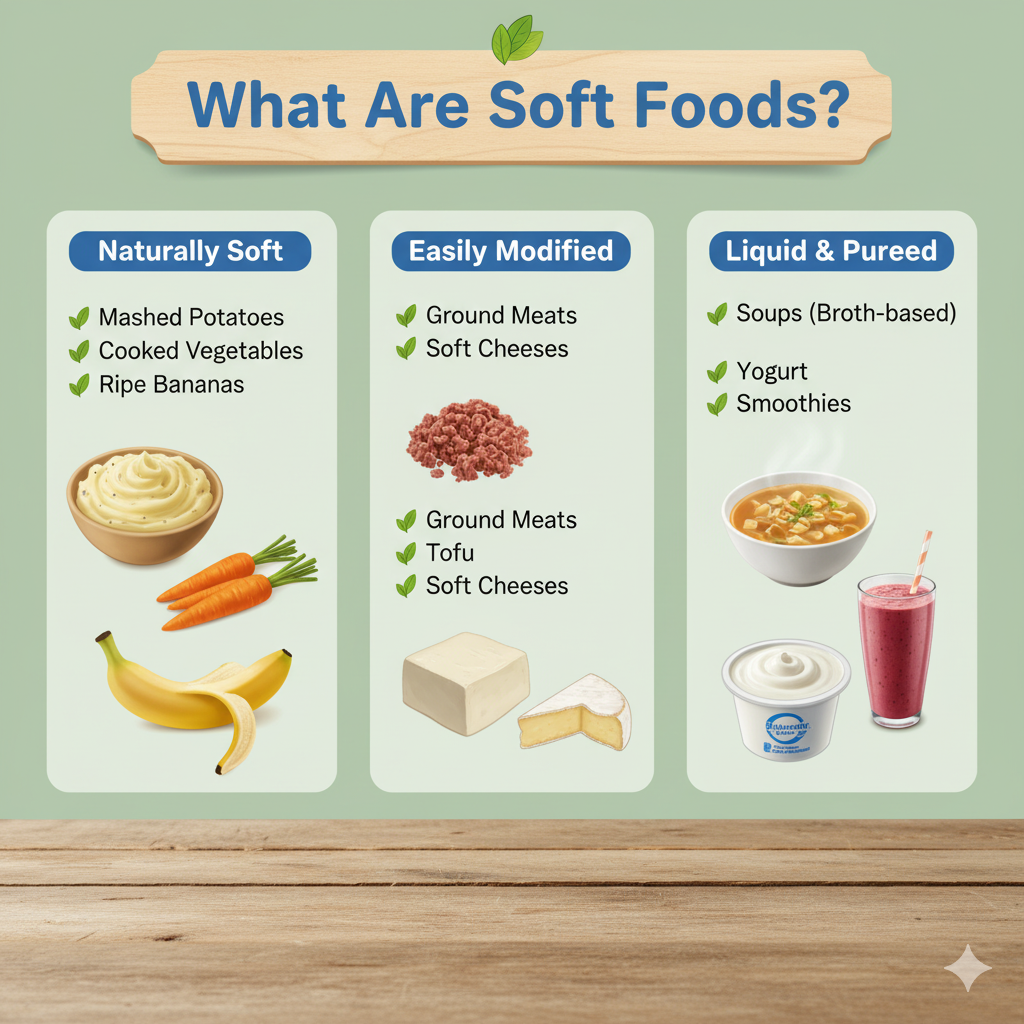
Soft foods are foods that require minimal chewing and are easy to swallow. They are typically smooth in texture, moist, and gentle on the teeth and digestive tract. Soft food diets are often recommended for:
- People recovering from dental surgery or procedures
- Elderly individuals with chewing or swallowing difficulties
- People with sore throats or oral infections
- Patients recovering from gastrointestinal surgery
- Individuals with dysphagia (difficulty swallowing)
- Cancer patients undergoing radiation or chemotherapy
Types of Soft Foods
Here are common categories of soft foods, many of which are easy to prepare or find in any grocery store:
1. Dairy & Eggs
- Yogurt (plain or flavored)
- Cottage cheese
- Scrambled or soft-boiled eggs
- Cream cheese
- Pudding or custard
2. Vegetables (Cooked & Mashed)
- Mashed potatoes or sweet potatoes
- Steamed carrots, squash, or zucchini
- Avocado (mashed or sliced)
- Peas or green beans (well-cooked)
3. Fruits (Soft or Stewed)
- Bananas
- Applesauce
- Ripe pears or peaches
- Canned fruits (in juice or syrup)
- Watermelon (seedless)
4. Grains & Bread
- Oatmeal or porridge
- Soft cooked rice
- Pasta with smooth sauces
- Soft white bread (without crust)
- Pancakes or waffles (with syrup or fruit puree)
5. Protein-Rich Soft Foods
- Ground or shredded chicken or beef (well-cooked)
- Tofu
- Fish (baked or steamed, without bones)
- Meatloaf
- Lentils or soft beans (well-cooked)
6. Soups & Broths
- Cream-based soups
- Vegetable purees
- Chicken noodle soup (with soft noodles)
- Bone broth
Tips for Preparing Soft Foods
- Moisture is key: Add broth, gravy, or sauces to keep foods from being dry.
- Use a blender or food processor to puree tougher foods into soft textures.
- Avoid spicy, crispy, or hard-to-digest ingredients like raw onions, nuts, or seeds.
- Season gently with herbs instead of hot spices to enhance flavor without irritation.
- Cool down hot foods slightly before eating to avoid burning sensitive areas.
Benefits of a Soft Food Diet
- Promotes healing after surgeries or dental work
- Prevents choking and aspiration in people with swallowing issues
- Reduces digestive strain for people with gastrointestinal problems
- Maintains nutrition when normal chewing is not possible
Soft foods can be temporary or long-term, depending on the individual’s condition.
FAQs About Soft Foods
Q1: Who should eat soft foods?
A: Soft foods are ideal for anyone recovering from dental or oral surgery, elderly individuals with chewing difficulties, people with throat issues, or those who’ve undergone gastrointestinal surgeries. Doctors may also recommend a soft food diet for those with dysphagia or certain chronic conditions.
Q2: Is a soft food diet healthy?
A: Yes, it can be healthy when well-balanced. It’s important to include a variety of protein sources, fruits, vegetables, and whole grains (in soft form). Avoid relying solely on sugar-heavy soft items like pudding or ice cream.
Q3: Can I eat soft foods if I have braces or aligners?
A: Absolutely. Soft foods are perfect for people with new braces or aligners, especially during the first few days of adjustment when teeth feel sore. Stick to items like mashed potatoes, soups, scrambled eggs, and smoothies.
Q4: What foods should I avoid on a soft food diet?
A: Avoid:
- Hard, crunchy foods (nuts, chips, raw carrots)
- Sticky or chewy foods (caramel, gummy candy)
- Tough meats or bread crusts
- Foods with small seeds or skins (like raspberries or popcorn)
Q5: How long should I stay on a soft food diet?
A: It depends on your reason for starting it. Some people only need it for a few days after dental surgery, while others with chronic issues may use it long-term. Always follow your doctor or dietitian’s recommendation.
Q6: Can soft foods help with acid reflux or stomach issues?
A: Yes. Soft, low-acid, and low-fat foods like oatmeal, bananas, yogurt, and steamed veggies can be easier on the digestive system and reduce irritation in conditions like acid reflux, ulcers, or IBS.
Q7: What are some easy soft food meals to prep at home?
A:
- Mashed sweet potato with soft scrambled eggs
- Oatmeal with banana slices and honey
- Chicken and vegetable soup
- Tuna salad with soft white bread
- Creamy pasta with steamed broccoli
- Greek yogurt with applesauce or pureed fruit
Final Thoughts
Soft foods don’t have to be boring or restrictive. With the right ingredients and a bit of creativity, you can create meals that are both gentle and nourishing. Whether you’re healing, managing a chronic condition, or just looking for a break from heavy chewing, soft foods can be a practical, comforting solution.
Remember to talk to a healthcare professional before starting a long-term soft food diet to ensure you’re getting all the nutrients your body needs.

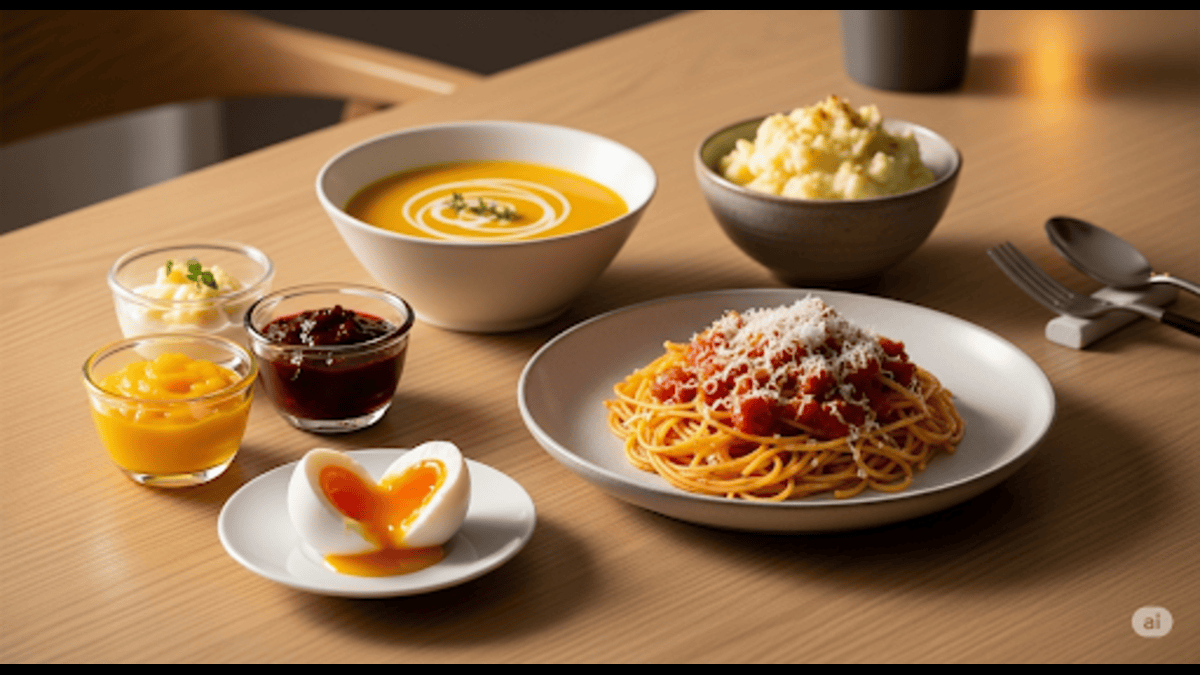
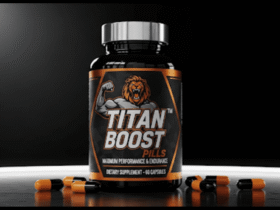










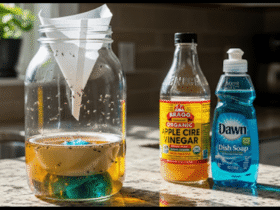

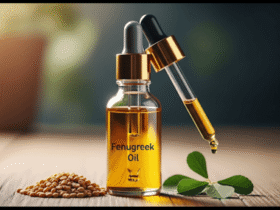
Got a Questions?
Find us on Socials or Contact us and we’ll get back to you as soon as possible.